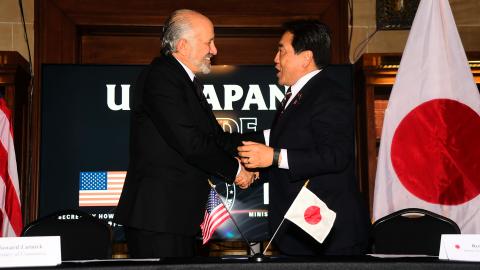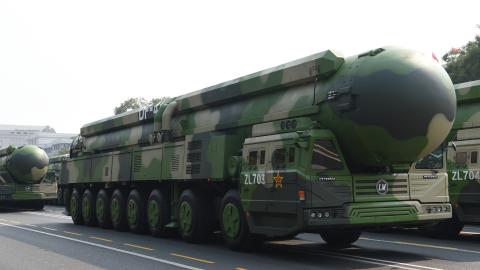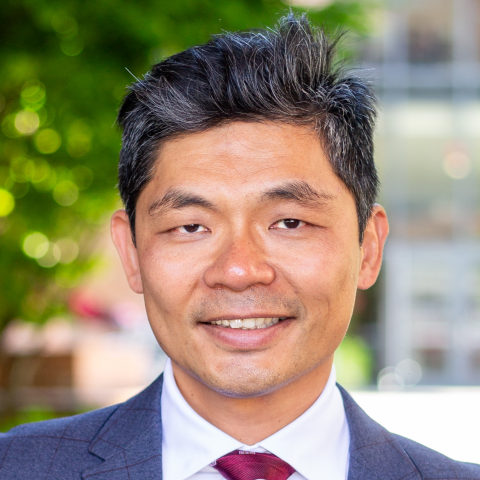This special volume of Current Trends in Islamist Ideology is addressed to a most important subject—the subject of the organization, or group of organizations, known as the Muslim Brotherhood. The importance of this subject partially derives from the importance of another related subject: the worldwide Islamic phenomenon and movement variously known as Islamism, Salafism, radical Islam, militant Islam, political Islam and the like. Since the events of 9/11, we have all learned that understanding this movement properly—broadly, deeply and accurately—is a very great necessity. It is a necessity if we are to understand the present-day world situation and crisis and if we are to devise sensible policies to address them. To this end, an understanding of the Muslim Brotherhood is absolutely essential and arguably more important than anything else. Nevertheless, over the past few years the Brotherhood has not stood in the foreground of discussion and reflection. The purpose of this volume is to address—or rather, to begin to redress—that oversight or neglect.
Why has the Brotherhood been overlooked, and why is it so important? Let me provide the following preliminary and incomplete answers.
As regards its neglect, there are several reasons that are partially natural and partially accidental. In the first place there have been other parts of the Islamist movement and phenomenon that have, so to speak, hogged the limelight—and naturally so. Since 9/11, for example, al-Qaeda has become a household word for more or less obvious reasons. It is the name of the jihadist and terrorist organization that, not only attacked us on that day, but also has established itself as the symbolic and sometimes organizational head of transglobal Islamic terrorism.
In like fashion most Americans have become familiar with the term “Wahhabi,” the name given to the specific and especially austere and harsh form of Islam that is institutionally established in the Kingdom of Saudi Arabia. In the first instance this was also a result of 9/11 and, in particular, of the fact that the vast majority of the 9/11 terrorists were Saudis—as is Osama bin Laden, the head of al-Qaeda. But it is also the result of the vast efforts the Saudis have made to promote their form of Islam through their support of a variety of activities in the wider world, including the West. These include the production and distribution of publications informed by the Wahhabi point of view, the establishment of mosques and support of imams, and the establishment of a variety of Muslim organizations. These efforts, which began in the 1960s, were operative for many years and produced massive results, though these results were not exactly in plain view. The events of 9/11 focused a light on these activities sufficient to bring them to public attention.
There is another, more accidental reason that the Brotherhood has escaped much scrutiny: it is not always operative under that name. This is somewhat true in the mostly Muslim world. It is emphatically true in other countries—in Western Europe and the United States, for example—with relatively large Muslim minority communities. In the United States the great majority of prominent Muslim organizations were founded by members of the Brotherhood from a variety of Muslim countries. Such organizations include the Muslim Student Association, the Council on American-Islamic Relations (CAIR) and the Islamic Society of North America (ISNA). But none of them expressly bear the name of the Brotherhood.
The natural and cumulative effect of these circumstances has been to make us al-Qaeda- and Wahhabi-centric and to place the Brotherhood in the shadows. But this is, to repeat, deeply regrettable because there is no other organization more fundamental to understanding the Islamist movement of today. There is no other organization that can match the Brotherhood’s length of history, staying power and extent of influence.
The Brotherhood was founded in 1928 and, as such, is the oldest formal and organized expression of Islamism or Salafism. It is certainly the oldest conceived of as a mass and ultimately worldwide movement. In accordance with that conception, it is today an impressively widespread movement, having at this point, many branches in both Muslim countries and Muslim minority communities in other countries. Its accumulated experience forms by far the greatest part of the history of Islamism, and it remains the Islamist organization with the greatest general impact on Muslims overall. This alone would suffice to render it an important subject of study.
But this does not suffice to exhaust its centrality. Because of its long history, it has by now had a substantial impact on almost all other Islamist organizations in a variety of ways. Many have been inspired by it—Maulana Maududi’s Jamaat-i-Islami of South Asia, for example. Some, like Saudi Wahhabism, have collaborated with it and been profoundly influenced by that association. Others have grown out of it, led by defectors who ultimately rejected its approach and set a new and frequently violent course of their own. This includes al-Qaeda, the Brotherhood being one of Osama’s first intellectual influences. Indeed, for many Muslims who eventually wind up in the most radical terrain, the Brotherhood and its sister organizations serve as an entry point. Few Islamists have remained unaffected by its existence, therefore, whether in a positive or negative sense—and sometimes in both.
In short, since its founding the Brotherhood has constituted the broad and essential base of the Islamist movement, which in itself is a remarkable achievement. For reasons to be mentioned later, it has also provided the essential framework of the movement.
But lest I be misunderstood, let me immediately say and stress what I just implied—that the Islamist movement today and broadly understood embraces a wide variety of viewpoints, tendencies and organizations that are sometimes at odds with one another. We will have many opportunities to discuss and do justice to these divisions later. But here I want to note the commonalities. All Islamists are joined together by at least three factors: the desire to purify and thus revive Islamic life; the desire to restore the worldly fortunes of Islam; and the conviction that both can be achieved only by reappropriating the model of Islam’s seventh-century founders, the Salaf or virtuous ancestors, which include Mohammed and his closest companions or followers.
As a practical matter, the very best way to begin to understand this nexus of factors and concerns is to study the Muslim Brotherhood. But understanding the Muslim Brotherhood is also the best way to understand the entire Islamist or Salafist movement—its past, present and perhaps its future. This is true even where one’s greatest concern is with the divisions within the movement and especially with the exponents of jihadi terrorism. For the latter are essentially derivative from the Brotherhood, as they offer variations on themes first widely propounded by the Muslim Brotherhood.
Finally there is the question of the Brotherhood’s role today. As noted earlier, discussion of these matters in recent years has tended to be al-Qaeda and Wahhabicentric. Lately, however, and especially over the past twelve months, public policy discussion and debate has increasingly focused on the Brotherhood. This is largely the result of three ways in which the Brotherhood has distinguished itself from al-Qaeda. The first concerns the difference between the Brotherhood and al-Qaeda with regard to the present efficacy and propriety of jihad. Al-Qaeda and associated groups are clearly positive; the Brotherhood is partially negative, though not absolutely. It supports jihad against American and Coalition forces in Iraq and Afghanistan, for example, and against Israel. The second distinction, a corollary of these attitudes toward jihad, is the Brotherhood’s inclination to participate in electoral politics, while al-Qaeda remains sharply hostile. Lastly, in recent years the Brotherhood’s participation in electoral politics has enjoyed some success, particularly in the Indonesian, Egyptian and Palestinian elections—the last through Hamas, which is the Palestinian branch of the Brotherhood. As a result, the Brotherhood has apparently demonstrated considerable popularity.
These three factors have posed a number of important questions: First, is the Brotherhood likely to become the leading voice within Islamism? Is it, in fact, likely to become the leading voice within the Muslim world generally by virtue of its widespread character? Is it, in fact, popular? Is this a good thing or bad thing? Does the difference between the Brotherhood and al-Qaeda mean that it is a force for moderation? Is this true everywhere? This last question arises from the fact that, although the Brotherhood is a worldwide organization, its individual branches often act independently of one another in the light of the countries and places they operate. Finally, how significant are these differences given the generally shared perspective regarding the proper direction of Muslim communities?
It has become increasingly urgent to address these questions. In part this is due to our involvement in the Middle East and the objectives we hope to achieve there. For example, should we take a benign view of the Egyptian Brotherhood and the Syrian Brotherhood, engage in active relations with them and even perhaps foster them? These are questions presently debated within and outside government.
But the urgency is also due, in part, to domestic concerns because of the substantial role that the Brotherhood plays in this country. These concerns were recently underscored in a trial in Texas focusing on the now-defunct charity known as the Holy Land Foundation. Among the evidence that came to light in that trial was a 1991 document describing the Brotherhood’s strategy in the United States. An excerpt reads:
The process of settlement of [Islam in the United States] is a “Civilization-jihadist” process with all the word means. The Ikhwan [the Brothers] must understand that all their work in America is a kind of grand Jihad in eliminating and destroying Western civilization from within and sabotaging their miserable house by their hands and the hands of the believers so that it is eliminated and God’s religion is made victorious over all religions. Without this level of understanding we are not up to this challenge and have not prepared ourselves for jihad yet. It is a Muslim’s destiny to perform jihad and work wherever he is and wherever he lands until the final hour comes and there is no escape from that destiny except for those who choose to slack.
What exactly does this mean? Is it still operative? What are we to think or do about it? To repeat, the Brotherhood raises urgent questions. As noted earlier, however, we are insufficiently well informed to answer them. For one thing, there has been considerable confusion about the Muslim Brotherhood’s history. Indeed, there has also been a considerable amount of nonsense. Our concern with this history is not merely to set the record straight, though that is important. But still more important is the fact that, without a clear understanding of its history, it is difficult if not impossible to judge how important that history may be to the present situation of the Brotherhood and to its future.
As mentioned earlier, the Brotherhood was founded in 1928 and is the oldest organized form of Islamism or Salafism. It was founded by Hassan al-Banna, an Egyptian school teacher, and was directed by him until his murder in 1949 by the Egyptian police.
Its longest continuous operation has been of course in Egypt, though almost from the beginning, al-Banna envisaged expanding it beyond Egypt’s borders. This expansion began in earnest in the mid-to-late 1940s and was in keeping with al-Banna’s fundamental and founding conception of the Brotherhood’s purpose, which I will describe a bit later.
My topic, however, is the course of the Brotherhood’s early history in Egypt. In particular, I will focus on the period of its first forty or so years—from its founding until approximately 1971. This period may be divided into two main phases. During the first, founding phase from 1928 to 1949, al-Banna laid down the main guidelines of the Brotherhood, many of which have continued to define it ever since, both within and beyond Egypt’s borders.
Its second phase, which one may date from al-Banna’s death in 1949 to 1971, is almost equally central to the history of the Brotherhood. During this period the Brotherhood underwent an unprecedented crisis that also had major long-term effects —both on the Brotherhood itself and on the Islamist movement generally.
In my opinion, by the end of this period—at about 1971—the Egyptian branch ceased to be the simple and sole authority for the Brotherhood as a whole. This is why I have limited myself to this period. Thereafter, one must pursue the history of the Brotherhood along somewhat separate lines, as this conference is doing through the organization of the panels.
But before turning back to the Brotherhood’s first and founding phase, I need to say a little more about the division I have proposed and the conclusion I have drawn. This is because my suggestion that, after 1971, we are dealing with two or more Brotherhoods has an important bearing on the organization’s subsequent history, down to the present, and how we interpret it. The analysis of this history is directly connected to the present controversies about the Brotherhood, for many of the current arguments over the relative benefits or demerits of the Brotherhood’s role focus on the alleged moderation of the Egyptian branch.
To describe and explain this division, I must dwell a bit longer on the second phase and the crisis it entailed. That the death of its founder might bring about a crisis was only to be expected. But it was also precipitated by the revolution that occurred in Egypt in July 1952, which brought to power the Free Officers Movement under the ultimate leadership of Gamal Abd al Nasser. During this period, or at least from 1954 on, the Brotherhood underwent fierce repression and persecution. This naturally affected its concrete operations, but even more significantly—for reasons I will discuss more fully later—this experience obliged its leaders to reconsider the vision, objectives and character of the movement. It was a trauma of immense proportions and, ultimately, produced more than one view. One is most famously represented by Said Qutb, the Brotherhood writer and theoretician who was eventually executed in 1966. Another is most closely associated with the Supreme Guide of the era—Hassan al-Hudaybi.
There is no doubt that this period had a major effect on the trajectory of the wider Islamist movement, largely through the massive impact of Qutb. His views created the groundwork for new and especially violent developments within the Islamist movement—a subject to which I will return.
For the moment, however, I will focus on the meaning it had for the Brotherhood itself. This is a somewhat more controversial issue. It turns on the question of which of the two competing views—that of Qutb or that of Hudaybi—prevailed in the guidance of the movement. There is a strong argument to be made that the Egyptian branch followed more or less in the path of Hudaybi, though this is not altogether clear. (Today, in fact, more people read Qutb than Hudaybi, and have done so for many years.) But even if it is or was absolutely clear, it does not immediately settle the question for the movement as a whole.
The more critical issue is whether the Egyptian branch remained unequivocally authoritative for the entire movement, as it had heretofore been—and I think it did not. The source of the doubt is the fact that, partially as a result of Nasser’s repression, the Brotherhood came to have a substantial base outside of Egypt that could operate as an alternative center of the movement.
The circumstances are as follows: a sizable number of the Egyptian Brothers who survived and escaped the repression relocated to other places, especially to Saudi Arabia. This was particularly true of the followers of Qutb, which included his brother. In the Kingdom, the refugees were relatively free to develop their own line of thought and even to affect certain currents within Wahhabism. According to a recent and well-informed study of Wahhabism written by David Commins, The Wahhabi Mission and Saudi Arabia, they even managed to do the near-impossible—to radicalize the already radical Wahhabism. They were also relatively free and able to spread their own views very broadly through the Muslim world, partially through the largesse of oil money. They thus became, de facto, an alternative base for the movement and able to present a serious claim to represent the authentic interpretation of the legacy of al-Banna and the Brotherhood—when and if they so chose.
The net result is that it is now fair to ask who speaks most powerfully for the Brotherhood—the Egyptian branch and its present Supreme Guide Muhammad Akif, or the broader movement whose most visible leader and spokesman is Shaykh Yusuf al-Qaradawi, an Egyptian to be sure but one who lives in Qatar and whose writ seems to run more broadly from the Gulf to London? We will necessarily return to this question in the course of the conference.
But let me now return to the Brotherhood’s founding phase and, in particular, to the aims, views and activities of Hassan al-Banna. Afterwards I will discuss in more detail the second, crisis phase and to the role of Qutb and Hudaybi. I will conclude with some remarks and reflections about the cumulative legacy of both and, in particular, the relationship of Qutb to al-Banna.
In speaking of the Brotherhood, I have used the phrase “the first organized form of Salafism,” which stresses the fact of its being an organization. I have done so for a reason. Strictly speaking, al-Banna was not the founder of Salafism. That distinction belongs to Muhammad Abduh, another Egyptian who was the Shaykh of al Azhar, and to some of his colleagues, students and disciples such as Said Jamal al-Din al-Afghani and Rashid Rida.
For greater clarity about the Brotherhood, I need to say a few things about Abduh. He was preoccupied with the decline of Islamic vitality and its corollary—the subjugation of Egypt and other parts of the Muslim world to European colonialism. In seeking to revive both the practice of Islam and its fortunes, Abduh argued that the accumulated Islamic tradition stood in the way of this task. It was necessary to prune that tradition, if not clear it away altogether. It was necessary to go back to Islam’s founding, to the generation of the Salaf, and rebuild Islamic society on that basis. Thus was the term Salafism coined, at least in its modern sense.
It should be noted and emphasized that Abduh hoped that Islam would not only be purified, but also be able to profitably adapt to modern progress and rationalism. He hoped to achieve his ends by reforming traditional Islamic education and the leadership it produced—a reform of the ulema or Muslim jurists. But he did not undertake to found an organization that would advance these objectives, and most of his students and disciples similarly focused on intellectual reform.
Al-Banna was in some ways the heir to Abduh’s perspective, especially in regard to taking one’s bearings from the Salaf and to resisting the West. But in other respects his career and work represent a major and even radical departure from Abduh—a departure involving a series of innovations that has come to define the Brotherhood and the Islamist movement more generally ever since.
What was the character of that departure and whence did it arise? Speaking most generally, one may say that al-Banna aimed at and succeeded in founding a utopian mass movement. It wedded a utopian vision to a strategic and tactical program of very considerable complexity designed to implement that vision. This utopianism is summed up in the motto that al-Banna ultimately supplied to the Brotherhood: “Allah is our objective. The Prophet is our Leader. The Quran is our Constitution. Jihad is our way. Dying in the way of Allah is our highest hope.”
This remains the motto of the Brotherhood to this day and is well known to any moderately well-informed Islamist. It defines the framework or universe of discourse within which Islamism has operated ever since, especially in regard to three themes. The first is the possibility and desirability of guiding all the worldly affairs of Muslims more-or-less exclusively on the basis of the Quran and the model of the Prophet as set forth in the Hadith. In shorthand and in practice, this means the application of sharia to all aspects of life and the political empowerment of Islam in all its dimensions. It is a proposal for what has come to be called the Islamic state.
In one sense this is no more than a restatement of a traditional Muslim perspective. But al-Banna gave it a novel, modern and ideological twist. Another somewhat later Brotherhood formula conveys the same idea: Islam is a Nizam al Kamil wa Shamil —a complete and perfect system. One may indeed suggest that al-Banna was the first within an Islamic context to employ ideology in the modern and strict sense of the term. At all events his ideology, as expressed in this motto, certainly was and is the most influential in the history of the Islamist movement.
The second distinctive theme in al-Banna’s original motto is the invocation of jihad. The third is the invocation of the ideal of martyrdom. Though both these themes indeed have a basis in tradition, the motto effectively brings them into the foreground in an ideological fashion and thus gives them somewhat greater weight than other aspects of Islam.
This is not to deny two important, if quite different, contentions made about this ideological formula. The first is that it is exceptionally simple, as are the relatively few works that al-Banna himself wrote elaborating his ideological views. This is especially true when compared with the work of such later Islamist figures as Said Qutb. The second is that later Islamists have rung many variations on these themes— especially the jihadists, who have done so by emphasizing jihad and martyrdom almost to the exclusion of everything else.
Though this motto’s significance will be discussed further, it now suffices to say that—despite the simplicity of al-Banna’s formula, or rather because of it—it still manages to define the general contours of the Islamist universe. Most importantly, it expresses the utopian spirit that informs the Islamist movement down to the present day. And it is this utopian spirit, inspired by the hope of recreating the lost paradise present at the founding of Islam and the time of the Salaf , that gives Islamism its radical character, whether in action or mere thought and speech. Al-Banna is the effective founder of this utopianism, and its radical spirit is a continuing force within the modern Muslim world.
However, al-Banna was not merely interested in elaborating utopian visions and dreams. He wanted to create a movement that would have a concrete impact on the Muslim world, beginning with Egypt and then radiating out from it, and the provision of a utopian vision in an ideological form was arguably a necessary condition for such a movement. A mass movement required a vision that could be readily understood by and inspire large numbers of ordinary Muslims.
Al-Banna’s formulations supplied that and, at the same time, entailed a vast simplification of the approach and reflections of the founding fathers of Salafism like Abduh. The founding of the Brotherhood involved other related differences as well. I will discuss some of them.
Perhaps first was the notion of the engagement of the mass of Muslims as such. Historians of the Brotherhood have sometimes linked this with the only ostensible premodern Muslim equivalent—the mass membership of Muslims in Sufi brotherhoods. Though al-Banna’s personal biography suggests that the Sufi model may well have influenced him, his focus on a mass movement derived more directly from the somewhat radical implication he drew from the very notion of Salafism. For Salafism was a critique of the whole apparatus of classical and medieval learning and scholarship. By praising the Salaf, it fastened on a period when the sole resources of the most eminent Muslims were the Quran and the example of the Prophet, and a fundamental idea emerged: if this was good enough for the Salaf, there was no reason why it should not be sufficient today. The Quran and Hadith—or, perhaps more properly, selected Hadith—were, moreover, potentially accessible to large numbers of ordinary Muslims. In short, it simplified the intellectual tasks of contemporary Muslims. (Such simplification remains a prominent feature of Islamism.)
A second and important corollary to the idea of a mass movement was the propriety of lay rather than clerical leadership. Although al-Banna received a traditional religious education, he was a layman in Muslim terms rather than a jurist or a cleric. And although he sometimes maintained cordial relations with leading figures of al-Azhar, the most famous Sunni theological institution in Cairo, he did not look to them for leadership. He implicitly upheld the propriety of Muslim laymen to lead the movement for Islamic reform. This has become a key, not to say fundamental, feature of Islamism ever since. Indeed, it has been carried to such an extreme that today major figures within Salafism—bin Laden, for example—have appropriated the privileges of the traditional jurist to issue legal rulings in the form of fatwas.
Both of these features—a mass movement directed by lay leadership—stemmed from al-Banna’s general view of what was required to reform Islam and, in particular, to reform Muslim politics so that it could meet contemporary challenges. The greatest of these, of course, was the challenge of the West. Al-Banna believed that the Muslim states could not be put on the right course and achieve their vocation without the reform of Muslim society as a whole, beginning with its individual members and their families and then moving on to larger social formations.
This led to the so-called “gradualist” approach in which the reform of society was seen to be the necessary condition for the ultimate political empowerment of Islam. Practically speaking, the overall goal was the creation of an alternative society. The expectation was that, when such a society became sufficiently massive, political control and transformation would be easily within reach—both in Egypt and all other places in the Muslim world to which this model might be extended. At that juncture the Quran would truly become the “Constitution” in the full sense.
To accomplish the goal of mass transformation, al-Banna stipulated and organized two general lines of approach. The first was recruitment and education—in Arabic, dawa and tarbiyah. The second was the creation of alternative social and even economic institutions.
To achieve these overall goals and undertake the particular tasks they required, al-Banna devised an elaborate organizational structure that included the creation of many local branches of the Brotherhood; membership divisions for adults, youth and women; continuing requirements for educational formation; and specialized groups devoted to particular tasks. He himself stood at its peak as Supreme Guide, which remains the title of the head of the Egyptian Brotherhood to this day and even, in a manner of speaking, of the movement as a whole. In short, he created a fully elaborated modern movement.
And he was remarkably successful. In little more than a decade—that is, by the beginning of World War II—this was indeed a mass movement and, as such, a powerful force in Egyptian society and even politics. It is estimated that its membership grew from about 1000 in the late 1920’s to 200,000 by 1940. It is a testament to his great talents and dedication to his goals.
It would be profitable to look at all this in detail. But in light of the limits of our time, it is more urgent to ask what led al-Banna in these directions. What led him, so to speak, to the “refounding” of Salafism? This will also permit us to address two additional and important related questions: How has that founding stood the test of time? How does it impact the subsequent history of the Brotherhood?
The simple answer to the first question—the question of al-Banna’s reasons or motives—is to be found in his analysis of the historical circumstances of his time. These were in some important respects different than those of Abduh, but they are not so different from our own. The most massive difference from Abduh’s time was the total collapse of the Ottoman Empire, brought on by its defeat in World War I, and the subsequent abolition of the Otttoman Caliphate under the newly established Republic of Turkey. While Abduh had surely lived in a period of Muslim decline, al-Banna was obliged to face its absolute lowest point. After World War I the vast majority of Muslims found themselves under foreign rule, a totally unprecedented situation in the long history of Islam.
Similarly unprecedented, due to the end of the Ottoman Empire and Caliphate, was the lack of any vestige of an authentic Islamic political tradition. That tradition had been imperial in character and had stretched back to Islam’s very founding in one form or another. For obvious reasons the Muslims who had come under foreign rule—in Egypt and everywhere else—were bound to object to their servitude and to seek their independence. This objective was vigorously pursued in the 1920s and ‘30s, and was largely accomplished after World War II with the establishment of independent nation states.
For al-Banna, however, this response presented additional complications and difficulties. For the pursuit of independence was framed in terms derived from European political history and political thought. Both the creation of nation states and the organization of their politics reflected Western-style institutions and parties. Al-Banna was obliged to ask himself whether this was Islamic, and his answer was no. Though it was of course necessary to secure Egypt’s liberation from Britain, doing so through the medium of Western conceptions was only to deepen the West’s domination over Islam. Indeed, it made matters worse because it led Muslims to internalize Western ways. (The upper classes were particularly enthusiastic about all things Western.)
In light of this analysis, al-Banna opposed himself to nationalism and its various accessories, like political parties. Instead he championed the Umma, the totality of the community of Muslims. It was the Umma to which Muslims owed their primary loyalty, especially since the historical slogan of Islam had been tawhid—unity or unification. But to promote this concept and give it force, a novel organization was needed—a movement of the sort I described earlier.
This did not mean that al-Banna was completely averse to involving himself and his movement in politics. But he conceived of that involvement in starkly different terms than did other political forces. In particular, he was opposed to the transformation of the Brotherhood into a political party. The Brotherhood was to remain a “movement.” Let me quote from al-Banna himself:
We are not a political party although politics in accordance with Islam is deeply rooted in our ideas; and we are not a welfare organization nor a sports team, although welfare and sports are part of our method; we are not any of these because these are all forms, techniques or means designed for specific objectives and for a limited period of time.
We are, however, an idea and a creed, a system and a syllabus, which is why we are not bounded by a place or a group of people and can never be until the Day of Judgment, because we are the system of Allah and the way of His Prophet.
We are the followers of the Companions of the Messenger of Allah, and the raisers of his flag as they raised it and like them, popularizers of his way and the memorizers of the Quran as they memorized it and the preachers of his dawa as they preached it, which is why we are a mercy for mankind.
How has this definition and program fared over time? In many respects, it has been remarkably long-lived. The Brotherhood remains a system and syllabus—a political, social and educational movement. Above all, it remains a movement, resisting to this day any attempt to call it a political party.
But as I indicated earlier, the Brotherhood has also been affected by major events that occurred after al-Banna’s death, particularly during the period of repression after Egypt’s 1952 revolution. This repression naturally affected the institutional side of the Brotherhood. But in the long term its biggest impact was on the other main element of al-Banna’s legacy—his utopian vision and its implications. I’ll now turn to this phase.
Initially, the July 23 revolution in Egypt seemed promising from the Brotherhood’s point of view. The Brotherhood had been in contact with some of the officers involved from 1940 on, often through the offices of Anwar Sadat. Brotherhood volunteers had fought side by side with the Egyptian armed forces in their invasion of Israel in the 1948 war. Above all, these new rulers were not the Western lackeys that the former ruling elite had been considered to be. They were true members of the Umma, that is, “true” Muslims.
This promising beginning did not last long, however. By 1954 it was over. Nasser undertook to ruthlessly suppress the movement. Its leaders and many members were arrested; some were brutally tortured; most were confined in concentration camps for many years. In the mid-1960s there was a brief amnesty, but very quickly some who had been released were rearrested and executed, including Said Qutb. As I mentioned earlier, others managed to leave Egypt and reestablish themselves elsewhere. A few like Said Ramadan, al-Banna’s son-in-law, managed to settle in Europe; many more emigrated to Saudi Arabia and deepened earlier connections with it.
This period or phase only ended with the death of Nasser and his replacement by Anwar Sadat. Sadat released those still imprisoned and even lent the Brotherhood some support as part of his program to undo the Nasserization of Egypt and to liberate it from effective Soviet control.
It is hardly surprising that the experience of repression would have a major impact on the Brotherhood—its views, strategy and tactics—especially as it no longer had its founder to guide it. But it was not merely the fact of repression that made such a huge difference; it was its source and manner—who the oppressors were, their aims and how they proceeded. It was, as I said earlier, a trauma of enormous proportions.
For these were men in whom the Brotherhood had placed some hope. They were Muslims or had been thought to be. The flip side of their suppression of the Brotherhood, moreover, was their establishment of a single mass party: they undertook to create a mass movement of their own that would govern and inform every aspect of Egyptian life. Partly for that reason, perhaps, their repression of the Brotherhood was far more brutal than anything it had suffered under the previous regime, which had in its own time been so hated and despised.
How was the Brotherhood to understand this new situation and how was it to revive the prospects of Islamism and Islamic reform? One simple question and answer, provided by Said Qutb, has since become famous and with good reason. The question—even if only implicit—was as follows: are these rulers Muslims? Given their ambition to recreate Egyptian society, was Egypt even Muslim? Qutb’s answer was no. Indeed, things had reached such a pass that, for Qutb, the most appropriate term for the present situation was jahillya, or ignorance. This was the term traditionally used to describe the condition of Arabia and Arabs prior to the mission of Mohammed. It was the period of idolatrous ignorance that Mohammed’s mission had come to reform and replace with the founding of Islam.
Using this term was potentially explosive. It effectively declared that the Muslim world had returned to the situation of the seventh century—a situation that combined great danger with great opportunity. One might, in a way, truly walk in the path of the Salaf. But the demands were unusually high.
This analysis had wide-ranging implications, some of which Qutb drew himself. These included a new emphasis on jihad and martyrdom. (Qutb himself suffered this fate.) Another related implication, more fully elaborated by others, was the declaration of Muslim rulers and others as kufr (infidels) and liable, as such, to death. Both have informed the views and approaches of later Islamist groups—including, of course, al-Qaeda. They live under the dispensation provided by the invocation of jahillya. As we learned on 9/11, we now do as well.
But this will be elaborated by others; I want to close by assessing the impact of Qutb and this second phase on the Brotherhood itself. As I said earlier, the repression ultimately produced two views—that of Qutb and that of Hudaybi. Each reflected one of the Brotherhood’s two most fundamental elements, which were its utopianism and its creation of a mass movement. For al-Banna these two elements went together as a harmonious and even seamless whole. But the Nasserite repression deprived al-Banna’s successors of that luxury, and they were forced to face painful choices. Most crucial for Hudaybi was the maintenance of the movement’s institutional capital. Qutb, however, believed that fidelity to al-Banna must begin with his utopian vision and its proper intellectual and practical interpretation in vastly changed circumstances.
It is useful to wonder what al-Banna would have thought of these responses. It would no doubt have been difficult for him to put at further risk the institutions he had built. On the other hand it is not difficult to imagine that he would have had sympathy for Qutb’s inclination to submit the new circumstances to a trenchant historical and ideological analysis and even for the answer he provided.
For the question that Qutb raised in his own time was similar to, or a variant of, the one posed by al-Banna in his. Is the current political order Islamic or not? Is nationalism or the nation state Islamic? Al-Banna’s answer was no. And one might say that the fully nationalist regime of Nasser vindicated al-Banna’s rejection of this approach. It is true that al-Banna found a way of working within the pre-Nasser situation, but we will never know how he would have dealt with the new regime.
Some remarks he made on the subject of jihad are revealing and go as follows:
Islam is concerned with the question of jihad and the drafting and the mobilization of the entire Umma into one body to defend the right cause with all its strength (more) than any other ancient or modern system of living, whether religious or civil. The verses of the Quran and the Sunnah of Mohammed … are overflowing with all these noble ideals and they summon people in general (with the most eloquent expression and the clearest exposition) to jihad, to warfare, to the armed forces, and all means of land and sea fighting. Such was the example set by the early generations of Muslims. My brothers, how do we compare with them?
To repeat, we do not know how al-Banna would have responded to the new situation of the 1950s and ‘60s. What we do know is that, at the end of the 1960s, his general view of the inadequacy and illegitimacy of nationalism was apparently vindicated by the disgrace of the nationalist regimes, beginning with Nasserism. It was then that the cause of Islamism first enunciated by al-Banna came to be ever more widely appreciated and embraced. It was the true beginning of the reign of al-Banna’s utopian vision.
And along with that vision al-Banna bequeathed the question just quoted: “Such was the example set by the early generations of Muslims. My brothers, how do we compare with them?” Salafism or Islamism necessarily revolves around that question. In the discussions that follow, we will see how that question has been answered in the era since Said Qutb.















